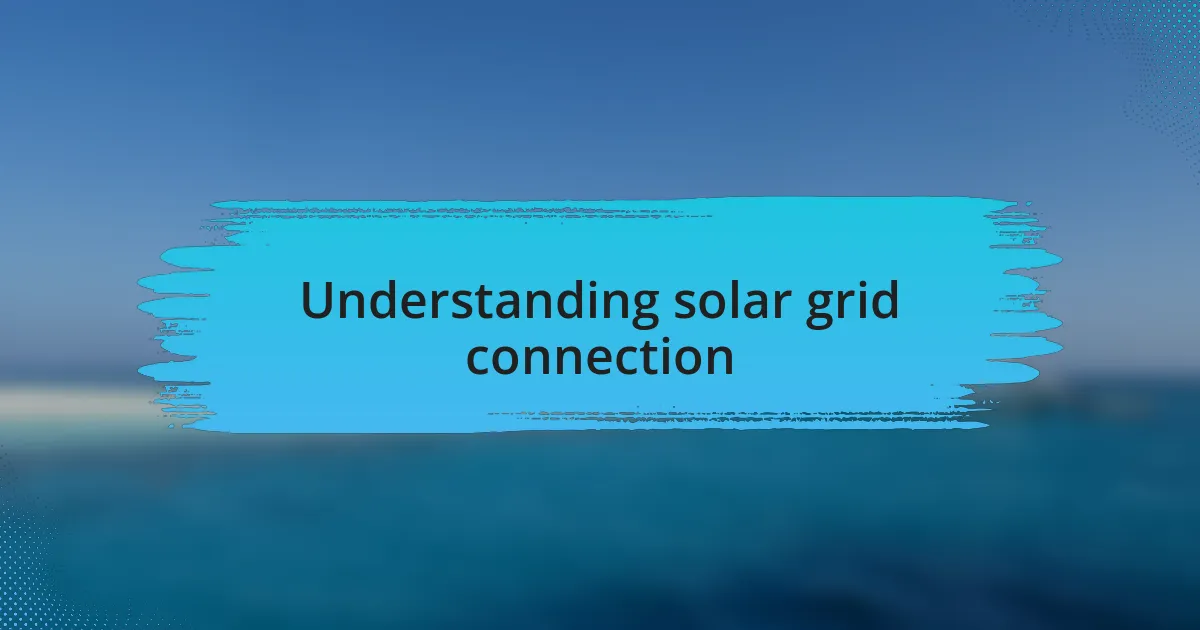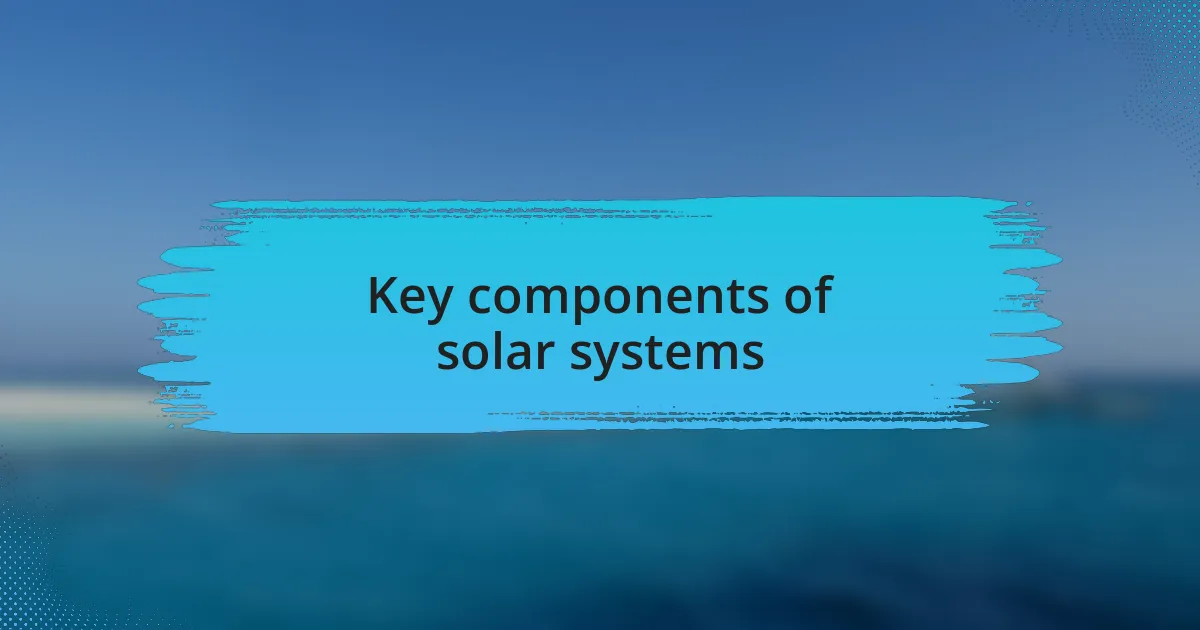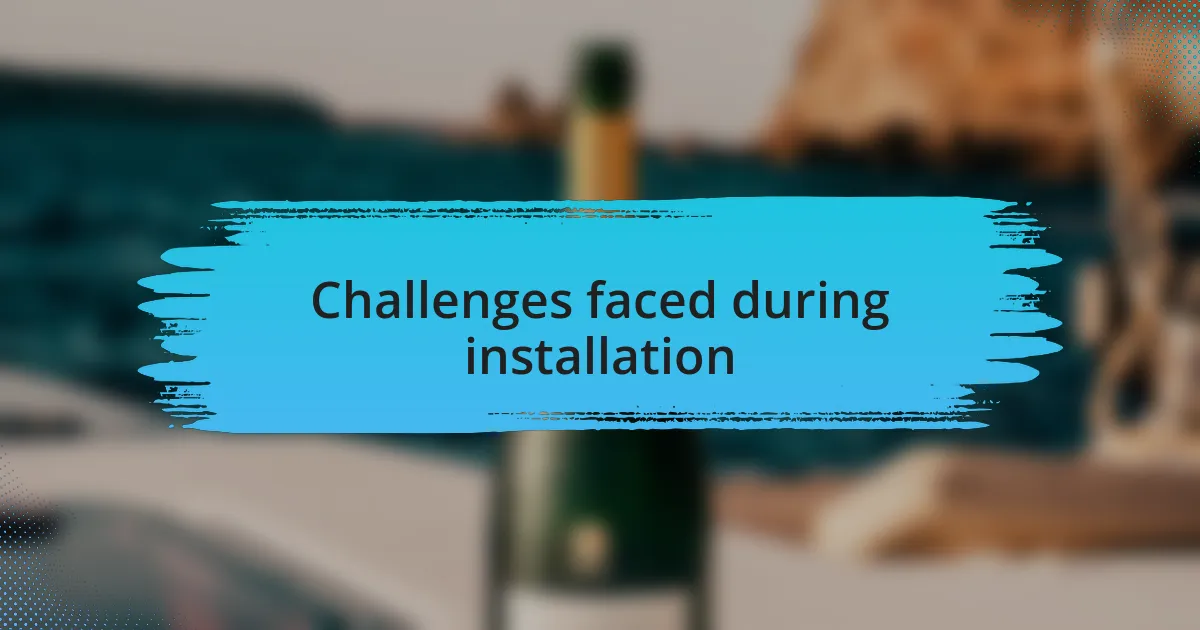Key takeaways:
- Luxury yachts symbolize freedom and indulgence, featuring cutting-edge technology and personalized experiences.
- Solar grid connections empower yacht owners to harness solar energy, offering sustainability and potential financial benefits.
- Key components of solar systems include solar panels, inverters, and batteries, enhancing luxury and energy efficiency on yachts.
- Challenges during installation involve space limitations, material durability against marine environments, and coordinating with installation teams.

Introduction to luxury yachts
Luxury yachts represent more than just a mode of transport; they symbolize freedom, adventure, and the quintessential lifestyle of indulgence. I still vividly remember the first time I stepped aboard a magnificent yacht; it felt like entering a floating palace, with every detail meticulously crafted for comfort and style. Can you imagine waking up to the gentle swaying of the ocean beneath you while enjoying a gourmet breakfast on your private deck?
These vessels are equipped with state-of-the-art technology and unparalleled amenities, often boasting features like infinity pools, cinemas, and gourmet kitchens. I recall chatting with the crew on one voyage, who shared their passion for delivering exquisite experiences tailored to every guest’s desires. Isn’t it fascinating how a luxury yacht can transform a vacation into a truly personalized escape, catering to both relaxation and adventure?
Moreover, luxury yachts often represent the finest craftsmanship and innovation in design, pushing the boundaries of what we expect from marine engineering. I’ve seen firsthand how these vessels blend aesthetics with practicality, ensuring seamless sailing while delivering eye-catching beauty. What more could one ask for than to immerse oneself in both luxury and the boundless horizons of the sea?

Understanding solar grid connection
Understanding solar grid connection involves grasping how solar panels can seamlessly tie into the existing electrical infrastructure. When I first explored this concept for my yacht, I was amazed to learn how solar energy could not only power the onboard systems but also conserve fuel. Isn’t it empowering to think that your luxury yacht can sail with the sun’s energy providing a sustainable solution?
One thing I quickly discovered was how a solar grid connection enables excess energy to flow back into the grid. This can offer potential financial benefits, too, as it allows yacht owners to receive credits for the energy they contribute. I remember talking to a fellow yacht enthusiast who turned his energy consumption into a revenue stream; he was practically giddy about the possibilities.
With advanced technology in solar inverters and smart meters, yacht owners can monitor their energy production and consumption in real time. I was intrigued by how these systems could offer detailed analytics, transforming the yacht experience into a more energy-efficient one. Have you ever considered how much more connected we can feel to nature when harnessing its energy directly?

Key components of solar systems
The heart of any solar system is the solar panels themselves. I remember the first time I stood on deck, initiating the installation process and gazing at the sleek, black panels. These aren’t just energy collectors; they represent a shift in how we think about power on our yachts. Have you ever thought about how these panels can effortlessly convert sunlight into electricity, allowing your yacht to navigate pristine waters without harming the environment?
Next up is the solar inverter. This component is where the magic happens, converting the direct current (DC) generated by the solar panels into alternating current (AC), which powers most onboard appliances. I distinctly recall the moment I turned on my first AC appliance powered by the sun—it felt like I was tapping into an endless reservoir of energy. This transformation not only brings a sense of independence onboard but also makes the whole experience of yachting even more enjoyable.
Lastly, we can’t forget about batteries. They store excess energy for those cloudy days or when the sun dips below the horizon. When I first saw my battery bank, neatly arranged and ready to work, I felt a sense of security knowing that I could rely on them for power at any time. Have you ever felt that rush of confidence in knowing you have backup power at your fingertips? These key components combine to create a robust system that enhances both luxury and sustainability in yachting.

Challenges faced during installation
During the installation of my solar grid system, one of the biggest hurdles was finding the right space on my yacht. The layout is often more compact than you’d expect, and I vividly remember grappling with the realization that the perfect panel placement might not exist. Have you ever faced limitations in a space you thought was ideal? It can be frustrating, but it forced me to think creatively.
Another challenge that caught me off guard was the marine environment’s impact on the installation materials. I learned quickly that not all components are created equal, especially when it comes to durability against saltwater and moisture. The moment I noticed corrosion on a few initial components, a wave of concern washed over me – was I prepared to tackle this ongoing maintenance? It’s essential to choose materials designed to withstand these conditions, and this experience taught me to be vigilant about quality.
Lastly, coordinating with the installation team was an intricate dance. Scheduling availability amid weather changes and tides often felt like playing a game of chess. I recall one windy day when they had to postpone, leaving me anxiously wondering about the progress. Has time management ever made you feel like you’re treading water instead of sailing smoothly? Those unpredictable moments really put the installation timeline into perspective and highlighted the need for flexibility.